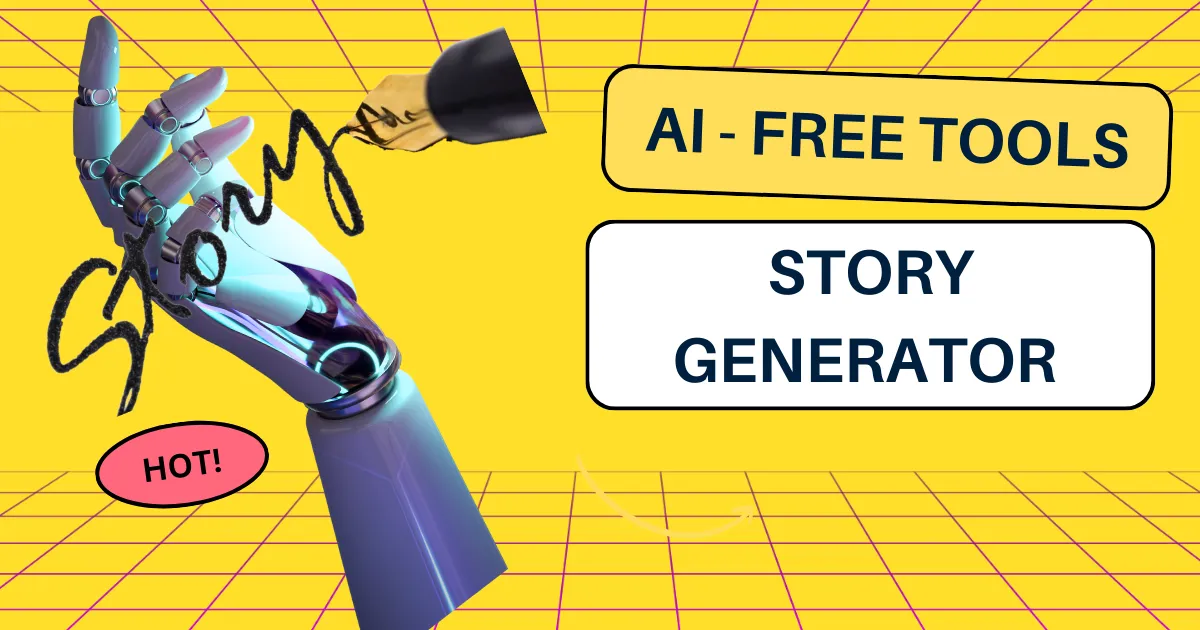AI Tool - Story Generator
What is a Creative Writing AI? A story generator created by AI is a computer program that utilizes artificial intelligence algorithms to generate narratives or storylines. These AI models, such as GPT-3.5, the one I’m based on, have been trained on vast amounts of text data from books, stories, and other written sources. They can generate coherent and contextually relevant text based on prompts or inputs provided by users.
The Narrative generation with AI analyzes and understands the structure, grammar, and style of the text it has been trained on, allowing it to generate new text that resembles human-written stories. However, it’s important to note that although AI story generators can create engaging narratives, they lack the personal experiences, emotions, and subjective understanding that humans possess. Therefore, the generated stories may sometimes lack originality, creativity, and deeper emotional depth.
Story Generator
AI-generated stories can be used for various purposes, including creative writing, content generation, and entertainment. They provide a tool for users to quickly generate story ideas, outlines, or even full-fledged narratives. However, human input and editing are often needed to refine and enhance the generated content to make it more engaging and coherent.
Benefits of AI Utilization – Automated Storytelling
1. Endless Creativity: AI-powered storytelling is capable of producing an infinite number of unique and creative stories. With their advanced algorithms and deep learning capabilities, these tools can generate narratives that captivate readers and keep them engaged.
2. Time-Saving Tool: Writing a story from scratch can be a time-consuming process. However, with an AI story generator, writers can save valuable time by quickly generating story ideas and plotlines. This allows them to focus on other aspects of their writing, such as character development and dialogue.
3. Inspiration on Demand: Sometimes writers may find themselves stuck in a creative rut, struggling to come up with new story ideas. AI story generators can provide instant inspiration by generating a wide range of story prompts and concepts. This can be especially helpful for writers who are experiencing writer’s block or looking to explore new genres.
4. Customization Options: AI story generators often come with customization options, allowing writers to tailor the generated stories to their specific needs. Writers can input specific parameters such as genre, character traits, or plot elements to create stories that align with their vision.
5. Learning Tool: AI story generators can be a valuable learning tool for aspiring writers. By analyzing the generated stories, writers can gain insights into narrative structure, pacing, and character development. This can help them improve their own storytelling skills and enhance their understanding of the craft.
6. Collaborative Writing: AI story generators can facilitate collaborative writing projects by generating story ideas that can be developed further by multiple writers. This can be a fun and interactive way for writers to collaborate and create unique stories together.
7. Versatility: AI story generators can be used across various mediums, including books, screenplays, and even video games. The versatility of these tools allows writers to explore different storytelling formats and adapt their ideas to different platforms.
In conclusion, AI story generators offer a multitude of benefits for writers, from saving time and providing inspiration to enhancing storytelling skills and facilitating collaboration. These tools are revolutionizing the creative writing process and opening up new possibilities for writers to explore.
Are Creative Writing AI unique and engaging?
AI-generated stories can be unique and engaging to a certain extent, but the quality and level of engagement can vary widely. The uniqueness of AI-generated stories often depends on the algorithms and training data used to create them. AI models like GPT-3 (which powers this response) are capable of generating text that sounds human-like and can mimic various writing styles, making them appear unique.
However, the engagement level of AI-generated stories may not always match that of human-created content. AI lacks true creativity, emotions, and a deep understanding of human experiences, which can result in stories that feel formulaic, lack depth or miss the mark when it comes to emotional resonance.
Here are some factors to consider regarding AI-generated stories:
Content Purpose: AI-generated stories are often used for specific purposes such as content generation for websites, chatbots, or automated news summaries. In such cases, their primary goal is to provide information or answer questions rather than engage readers emotionally.
Quality Control: The quality of AI-generated stories can vary based on the training data and fine-tuning. Some AI-generated content may be of high quality and engaging, while others may contain errors or lack coherence.
Human Touch: Many organizations use AI-generated content as a starting point and then have human writers or editors review and enhance the content to make it more engaging and tailored to their audience.
Genre and Style: AI can be trained in various genres and styles of writing, but its understanding of these genres may be limited. It may not fully grasp nuances, humor, or cultural references that human writers can incorporate to engage readers.
Audience Perception: Whether AI-generated content is engaging also depends on the audience’s perception. Some readers may not notice any difference, while others may find AI-generated content less engaging due to its lack of authenticity.
In summary, AI-generated stories can be a valuable tool for content generation and automation, but their uniqueness and engagement level can vary. They are most effective when used in conjunction with human oversight and editing to ensure quality and alignment with the desired audience’s expectations.
